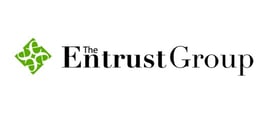Hello, we’re here to help!
How to Send Funds from an Investment to Your Entrust Account
This video will show you how to send funds from an investment to your Entrust account in the Entrust Client Portal.

Most Popular
How to Make a Contribution to Your SDIRA
How to Refer a Friend to Entrust
How to View and Download Tax Forms
How to Log in to the Entrust Client Portal
How to Reset Your Password
How to Purchase Real Estate Notes
How to Send Funds from an Investment to Your ...
How to Complete a Rollover to Your Entrust SDIRA
How to Set Up Multi-Factor Authentication (MFA)
How to Set Up Multi-Factor Authentication (MFA)
Learn how to reduce the risk of unauthorized transactions by up to 99.2%.
How to Check Your Account Balance
This video will show you how check your account balance
How to Apply for the Entrust myDirection Card
This video will show you how to apply for the Entrust myDirection Card
How to Set Up Your Online Profile on the Entrust Client Portal
Setting up your online profile on the Entrust Client Portal is a straightforward process designed to ensure you have secure and easy access to manage your investments.
How to Log in to the Entrust Client Portal
This video will show you how to log in the Entrust portal.
How to Complete a Rollover to Your Entrust SDIRA
This video will show you how to complete a rollover to your Entrust SDIRA:
How to Reset Your Password
This video will show you how to reset your password for the Entrust Client Portal.
How to Send Funds from an Investment to Your Entrust Account
This video will show you how to send funds from an investment to your Entrust account in the Entrust Client Portal.
How to Purchase Real Estate in the Entrust Client Portal
This video will show you how to purchase real estate through the Entrust Client Portal.
How to Make a Contribution to Your SDIRA
This video will show you how to make a contribution on the Entrust Client Portal.
How to View and Download Tax Forms
This video will show you how to view and download tax forms.
How to Purchase Alternative Assets
This video will show you how to purchase alternative assets using the Entrust Client Portal.
This guide provides step-by-step instructions for purchasing alternative assets, like private equity or private lending, through the Entrust Client Portal.
- Initiate the Investment Process: After logging in to the Entrust Client Portal, navigate to the Dashboard. In the "Quick Links" box, click on "Make an Investment."
- Select Alternative Assets: Choose "Alternative Assets" for private equity investments, unsecured notes, convertible notes, etc. Click "Next."
- Select Your Account: Specify the account you want to use for the investment. Click on "New Purchase."
- Specify Investment Type: Choose the type of investment (e.g., private lending, private equity). Click the box to agree to the e-signature agreement. Click "Next."
- Create a New Investment Request: Opt to create a new investment request or continue an existing draft. Click "Continue with New Request."
- Provide Investment Details: Specify the type of private equity asset (e.g., LLC). Enter the name of the investment. Fill in any additional information if necessary (fields without a red star are optional). Provide the investment manager's email to send the agreement for signature. Enter the transaction amount (initial investment amount only). Specify the number of shares or units if applicable (optional).
- Choose Payment Method: Select the method for sending funds (wire, ACH, check). Below are the costs associated with each payment method:
- Wire: $30
- ACH: Free
- Check: $10
- Cashier's Check: $30
- Choose how you’d like to pay the $95 asset purchase fee (using cash in account or credit card) and click "Next."
- Uploaded Required Documents: Upload the subscription agreement or operating agreement (required). Other documents without a red star can be left blank. Check the box to confirm that you’ve read and approved the attached agreement.
- Sign and Submit: Do not sign on the actual signature line of the agreement. Instead, sign in a blank space in the bottom corner of the signature page. Check the acknowledgment boxes. Click "Submit."
- Completion: A link will be sent to the investment manager for electronic signature via HelloSign. Once signed, the funds will be released
By following these steps, you can successfully purchase alternative assets through the Entrust Client Portal.
How to Purchase Real Estate Notes
This video will show you how to submit a real estate note investment request in the Entrust Client Portal.
Real estate notes are promissory notes secured by a mortgage or deed of trust. They are legal documents that represent a loan to a borrower for the purchase of real estate. These notes include details about the loan, such as the amount, interest rate, repayment schedule, and the property’s collateral.
Self-directed IRA (SDIRA) holders may find real estate notes an attractive investment for their predictable cash flow, asset diversification, and collateral security.
In this article, find step-by-step instructions for submitting a real estate note investment request through the Entrust Client Portal:
- Initiate the Real Estate Note Investment: After logging in to the Entrust Client Portal, navigate to the Dashboard. Scroll down to the "Quick Links" box and click on "Make an Investment." Select "Real Estate Notes" and click "Next."
- Select Your Account and Review Request Type: Choose the account you want to use for the investment. Select the review request type:
- Normal: Typically takes three to five business days.
- Expedited: Requires a $150 fee to process in one to two business days.
- Enter Closing Agent Information: Provide the closing agent's company name. If your company is not listed, use the drop-down option to add it. Enter the closing agent's information.
- Provide Property Information: Enter the property details, including parcel number or lot block number. Provide borrower information. If there are multiple borrowers, use the "Add Borrower" button.
- Specify Collateral and Note Details: Specify the collateral type (e.g., note secured by deed of trust or mortgage). Select the note type: new note, existing note, or seller carryback note. Enter the note amount by pressing zero until the correct dollar figure is displayed. Indicate if the note is discounted and provide the necessary agreement.
- Loan Position and Servicing: Specify the loan position (first, second, third, or other). If you have a loan servicer, provide the details; otherwise, leave it as "No."
- Payment Instructions: Choose the method for sending funds: wire ($30 fee), check ($10 fee), or cashier's check ($30 fee). Select the mailing option for the check: regular mail or overnight ($30 fee).
- Upload Required Documents: Upload the promissory note signed by the borrower. Upload the deed of trust or mortgage signed and notarized by the borrower. Provide the lender title commitment showing the IRA as the vested party.
- If necessary, upload additional documents (wiring instructions, loan servicing agreement).
- Review Expenses and Submit: Review the expenses: $175 asset purchase fee plus any check or wire fees. Choose the payment method: cash balance in the account or a credit card on file. Check the acknowledgement boxes and click "Submit."
After submission, you can add more documents or edit existing information if necessary. If any corrections are needed, click "Edit," make the changes, and resubmit.
By following these steps, you can successfully submit a real estate note investment request through the Entrust Client Portal.
How to Check Income Received from an Asset
This video will show you how to find income that is generated by assets in your SDIRA.
Navigating the Entrust Client Portal to find income generated from an asset is a simple process. Whether you're monitoring returns from investments or keeping track of asset performance, this guide will help you swiftly locate the information you need.
Let's get started:
- Log In and Access the Dashboard: Upon logging into the Entrust Client Portal, you'll be directed to the Dashboard by default. This is your home base for accessing various features and information related to your account.
- Navigate to the Transactions Tab: Look for the "Transactions" tab, which is prominently displayed in your portal's navigation area, and click on it to proceed to the next step.
- Select Your Account: If you manage multiple accounts through the Entrust Client Portal, you'll need to specify which account you want to review.
- Locate Your Transactions
-
- After selecting your account, scroll down to view a comprehensive list of transactions. These are sorted starting from the most recent.
- You'll be looking for transactions labeled as "Income Non-Taxable" or similar, depending on how income from your asset is classified.
- Locate the transaction labeled "Other Income Non-Taxable." This indicates that funds have been received from an asset and recorded as income generated by that asset.
- The amount received is displayed under the "Principal Cash" column. In our example in the video above, the account received $1,000 in income from the specified asset.
It's worth noting that you might encounter transactions labeled as "Sale of Assets" instead of direct income. This signifies that funds were received from an asset, but they are recorded differently — either as a sale or liquidation rather than cash flow.
For instance, a transaction labeled "Sale of Assets" would show the funds received under the same "Principal Cash" column. In the above video, you can find an example of this transaction, indicating a receipt of $35,000.
Understand the Income Generated By Your SDRIA
By following these steps, you can efficiently locate and understand the income generated from your assets within the Entrust Client Portal. This process is essential for keeping a close eye on your investment returns and managing your portfolio effectively.
How to Navigate Entrust Connect
This video will show you how to utilize the Entrust Connect tab in the Entrust Client Portal.
How to Refer a Friend to Entrust
This video will show you how to refer a friend to Entrust.




